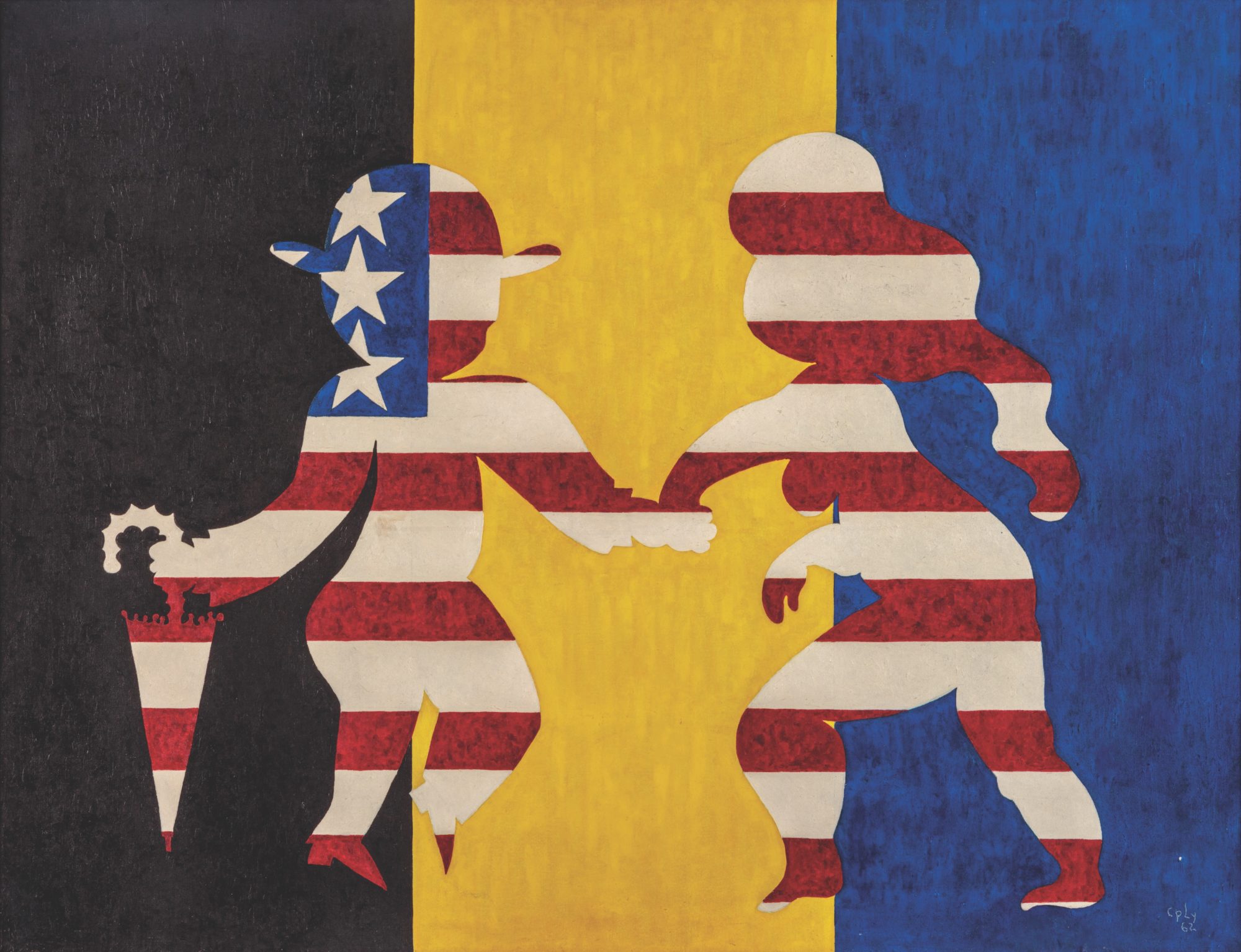
The William N. Copley Estate is extremely pleased to announce “William N. Copley”, an extensive career-spanning retrospective of the artist’s work organized by Fondazione Prada, which will be on view in Milan from October 20th until February 12, 2017. Curated by Germano Celant, and organized in partnership with the Menil Collection in Houston, Texas, “William N. Copley” will present the most comprehensive retrospective of the artist’s work to date, featuring an extensive installation that highlights the many groups of work that Copley produced in series form, alongside a survey-oriented portion that provides an overview of Copley’s oeuvre and his related activities as a publisher, patron, collector and art dealer.
Fondazione Prada’s “William N. Copley” exhibition also breaks new ground by bringing together several masterpieces of Surrealism to Milan for the first time, presenting together in a special display a collection of iconic Surrealist works that were once part of Copley’s collection and will now be generously loaned by the Menil. These works played an informative role in developing Copley’s artistic temperament and will be shown alongside exemplary Copley paintings to create a dialogue illuminating the relationship Copley had with the movement.
The William N. Copley Estate would like to acknowledge the hard work and dedication shown to this ambitious project by the curatorial team at Fondazione Prada, and we would like to thank everyone at both museums for presenting this spectacular view of William N. Copley.
FONDAZIONE PRADA PRESS RELEASE:
Organized in collaboration with The Menil Collection, Houston, the Italian counterpart of the retrospective “William N. Copley” is curated by Germano Celant, and retraces the entire career of the American artist – started in Los Angeles in the 1940s, developed in Paris and subsequently spanned across Europe and the United States.
Expanded considerably compared to the partner show in Houston, at Fondazione Prada “William N. Copley” stands out for its richness and the presence of never-before seen materials.
The exhibition includes over 150 works realized by Copley from 1948 to 1995, from international museums and collections all over the world (Museum of Modern Art, New York; Los Angeles County Museum of Art; Whitney Museum of American Art, New York; Philadelphia Museum of Art; Stedelijk Museum, Amsterdam; Sammlung Goetz, Munich; Museum Frieder Burda, Baden-Baden), and constitutes the largest retrospective ever dedicated to the American painter.
For the first time ever, Italian audiences will also be given the opportunity to admire a corpus of masterpieces by Max Ernst, René Magritte, Man Ray and Jean Tinguely, once part of Copley’s personal collection, today part of The Menil Collection.
In Milan, the exhibition “William N. Copley” will develop on the two levels of the Podium. The first floor features a selection of significant works by the artist in dialogue with surrealist works from Copley’s private collection, retracing the artist’s long, complex biographical and intellectual journey; a path he shared with Marcel Duchamp, Ernst, Magritte and Man Ray, among others. This selection of works is completed by an impressive collection – in part presented to visitors for the first time ever – of publications, photographs, catalogues and archive materials that were made available by the William N. Copley Estate in New York.
On the ground floor, visitors enter a structure constituted by 8 different environments, each dedicated to a specific subject or aspect of Copley’s production. One room reunites cloth and painted flags the artist realized between 1961 and 1975 on the theme of geographical and cultural membership. In several of these, for exampleCold War (1962) and 1776 and All That(1976), the female figures and stylized, unsettling representations of everyday objects overlap the motifs and colors typical of British, Japanese, Spanish or Russian flags.
Other artworks, like Imaginary Flag for USSR (1972) and Imaginary Flag for Great Britain(1972) are “invented” banners which, through a practice recalling surrealist collages, deal with sensitive themes such as the Cold War, political ideologies and national identity in a playful manner.
Another environment is dedicated to the “unknown whore” (in ironic contraposition to the military monument of the “unknown soldier”), the figure of which, like an obsession, populated the artist’s imaginative repertoire right from the beginning of his career. This room also displays large-scale paintings created between 1965 and 1986 and connected with the installation Tomb of the Unknown Whore, presented in 1986 at the New Museum in New York.
These praise sexual liberty and pay homage to the prostitute, a social category that Copley believed was victim of injustice. A series of screens dating from 1958 to 1982 are set alongside triptychs created between 1951 and 1995. These demonstrate Copley’s compositional mastery in realizing intricate spatial combinations of human figures or everyday subjects.
The X-rated series – exhibited as a picture gallery – presents erotic subjects and rituals taken from adult magazines in an attempt to, in the artist’s own words, “break through the barrier of pornography into the area of joy.” The Nouns series stands at the center of another room hosting the “ridiculous images” of everyday objects set against abstract backgrounds with geometrical compositions.
In another section visitors will find seven mirrors, contoured to form images, first shown in New York in 1978 as part of the exhibition “The Temptation of St. Antony”: a wallpaper hand-painted by Copley himself recreates the atmosphere of a traditional American brothel. These are followed by five paintings in which Copley reinterprets the motifs and figures of La nuit espagnole (1922) by Francis Picabia, once part of his private collection.
The last environment features a selection of acrylics and oils on canvas produced between 1984 and 1989, testify to the numerous variants with which Copley, interweaving silhouettes or figures, reappropriates his own iconographic motifs: from female nudes to imagery from Mexican folklore; from nocturnal Parisian scenes to mythological visions populated by fauns, satyrs and nymphs.